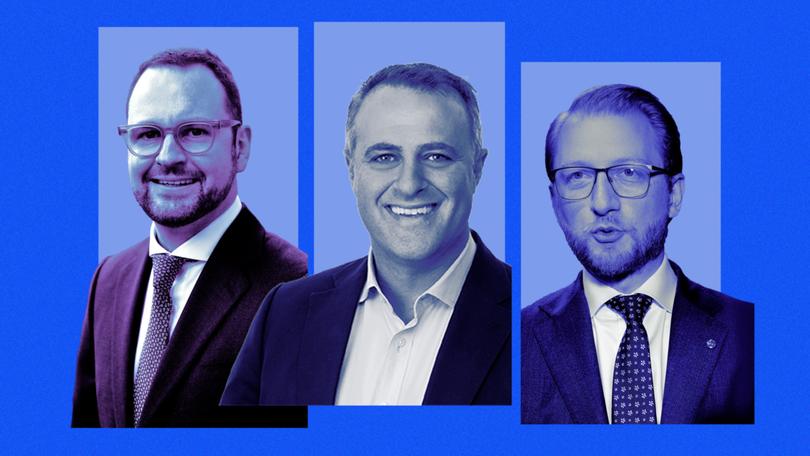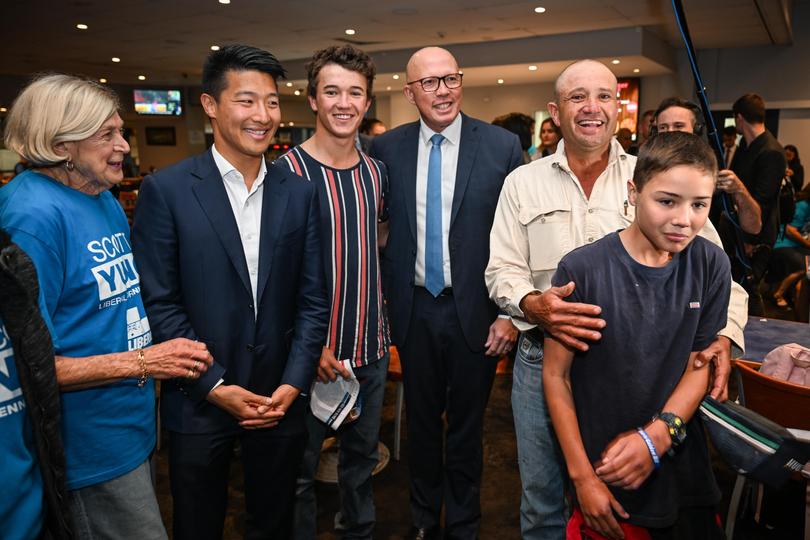AARON PATRICK: From the ashes of the doomed campaign, a new Liberal Party will emerge eventually

Around the Liberal Party today, there’s a depressive funk. The campaign energy has dissipated, and is being replaced by a collective resignation of tough years ahead.
As they watch, obsessively, the final election counting, Liberal and National MPs are coming to terms with the likelihood that they face, at least, six more years before a serious chance at returning to the ministerial suites.
By then, most of the veterans of the Abbott-Turnbull-Morrison Coalition governments — those who hoped their time again was drawing close — will be their sixties. Leadership contender Sussan Ley will be 70. Her undeclared competitor, Angus Taylor, will be 65.
Sign up to The Nightly's newsletters.
Get the first look at the digital newspaper, curated daily stories and breaking headlines delivered to your inbox.
By continuing you agree to our Terms and Privacy Policy.A new generation, hungry to end Labor’s reign, will be pushing upwards, likely led by Tim Wilson, James Patterson and Andrew Bragg, among others. Those of Peter Dutton’s frontbench who survived Saturday’s carnage must be starting to realise many will never enjoy power again.
All accept the party needs to change, just as Australia has. Even those who considered the 2022 loss an aberration of Scott Morrison’s unusually acute unpopularity must realise a Liberal Party largely excluded from Sydney, Melbourne and Adelaide, and much of Perth, is not a viable alternative government.
Cultural misstep
The Coalition’s failure to win over what might be called New Australia was at its most obvious in Bennelong, a Chinese-heavy Sydney electorate. The Liberals chose a young, engaging and Chinese-speaking candidate in Scott Yung. They beat Labor on the ground, running a dozen stalls across the electorate every day, and spent huge sums on advertising.
Then they decided to swap preferences with Pauline Hanson’s One Nation, a party perceived by many Chinese as racist. It did not help that Mr Dutton had used a Chinese Navy exercise in the Tasman Sea to attack the government’s defence policies.
About 700,000 Australians were born in China. They were spooked. At polling booths across Bennelong, all Chinese-speaking Labor volunteers said, as voters entered polling booths: “Don’t risk Dutton.”
Yung lost by 9 per cent.

Spoils of defeat
In the last week of his doomed campaign, Mr Dutton promoted an ad that was a homage to John Howard, the prime minister from 1996 to 2007. Mr Howard, now 86, is a relic of the old Liberal Party. That Mr Dutton thought the association might help save his career helps explain why his defeat in Dickson is good for the party.
Those left are focused on the spoils of defeat. The leadership contest is all the partyroom cares about. Fixing the joint comes later.
Unless a wildcard candidate such as Mr Wilson enters, the contest will be a straight factional contest between the left, which is shifting behind Ms Ley, and the right, which wants Mr Taylor.
Neither have clean hands from the disaster. Mr Taylor was unable to convince Australians that Treasurer Jim Chalmers ran the economy into the ground, and he would be more capable. As Mr Dutton’s deputy, Ms Ley’s job was to stop her boss making stupid mistakes. The five weeks shows she failed, badly.
Is this possible?
A rational party would elect the most popular leader. The Liberal left says: only we can win back the inner cities. The right says: the future is in suburbs.
Nationals senator Matt Canavan, speaking in front of an “End Net Zero” sign, said the Coalition needed to honour its new alliance with the working class. “We need to ignore those loud voices from those people who do not face those economic struggles in their lives to want us to go, so-called, to the left.”
Former Liberal Defence Minister Christopher Pyne wrote in The Age — the voice of progressive Melbourne — not to abandon the “teal” seats. The party’s “policies need to be driven by what is going to win over young voters, professionals, and women,” he wrote.
No doubt both are right. But are both possible? Without a significant urban presence, some question if the Liberal Party can survive as a credible second force in politics.
History shows parties learn from their mistakes. The Labor Party went through a similar wrenching experience in the aftermath of the 1972-75 Whitlam government. After Dutton-like repudiations in two elections, Labor realised it needed to present itself as a responsible economic manager to be trusted with government again.
It took eight years, but Labor returned to power in 1983 and enjoyed a golden period until ‘96.
The path back
Reforming the Liberal Party will be hard. It is not impossible. The states offer proof.
Two years ago the NSW Liberals lost power after one of their premiers was found to have engaged in corruption.
Today, the state party has 45 per cent female MPs, some of whom are in their 30s, including one who is Muslim and another who is openly bisexual. The Opposition is grappling with the housing shortage, and balancing the state’s hugely important coal industry with many voters’ deep concerns about global warming.
In Queensland, a 46-year-old Liberal National premier, David Crisafulli, combines tough-on-crime policies, support for individual rights and just enough paternalism to keep the state content.
And then there is Goldstein, which may be a case study for a federal city revival. On Tuesday afternoon Liberal candidate Tim Wilson moved ahead of independent MP Zoe Daniel by 734 votes. He looks likely to become the first-ever Liberal to win back a teal seat.
Fought in wealthy Melbourne beach suburbs, Mr Wilson’s benefited from Jewish anger towards what they saw as tacit, and sometimes explicit, support on the left for Palestinians in the Middle East war.
Mr Wilson was more than a vehicle for Jewish fear and anger. A fierce free-markets advocate who happens to be gay, he fought for his seat, street by street, bending Goldstein to his will through the force of his arguments and personality.
Such representatives may be able to lead the Liberal Party back.

